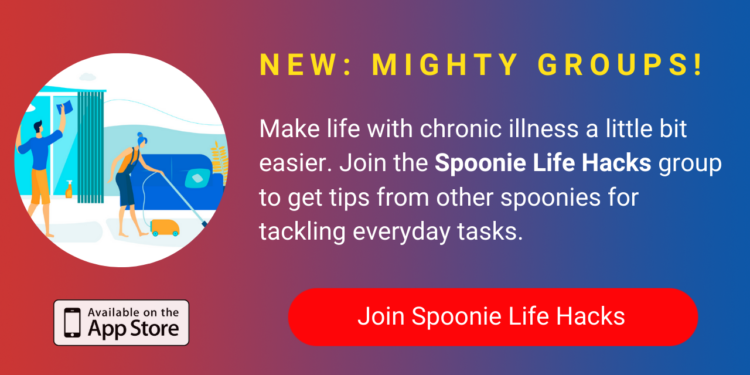What Receiving My Ehlers-Danlos Syndrome Diagnosis Really Felt Like
“You’re not a hypochondriac. This is real.”
This quote accompanies several emotions varying with the moment each time it crosses my mind. Receiving a diagnosis after many years of unexplained conditions comes with a surreal feeling. Wes and several others asked me how I felt finally knowing, and the truth is…
• What is Ehlers-Danlos Syndrome?
• What Are Common Ehlers-Danlos Syndrome Symptoms?
I’m not really sure.
The geneticist appointment originally had a six month wait. Six months, you guys. We shouldn’t be waiting six months for appointments with specialists, but what can we do when there aren’t other options? I asked the receptionist to *please* add me to a cancellation list without believing she would ever think about me again. I was wrong because she called me six weeks later with an opening, and I jumped at the chance.
While I would normally be ecstatic for the chance at a telehealth appointment, some of the things required for this exam were less than ideal in this form… but I did it anyway after setting some hard boundaries with the doctor and genetic counselor. I felt like a performing monkey, but by the end of the appointment I had a diagnosis. Decades worth of issues, feeling like a hypochondriac, hiding symptoms and pretending everything was manageable and fine culminated into two sentences that, while they didn’t change the course of my life, they connected things in a way I never dreamed would be the truth.
“You’re not a hypochondriac. This is real.”
This was the first thing he said after putting me through the paces of a telehealth “exam.” Then he proceeded to explain the long list of symptoms I’d lived with for years—some most of my life—was due to a disorder called Ehlers-Danlos syndrome (EDS). The simple answer is, it’s a disease that weakens the connective tissues of your body. The full answer is there’s an extensive laundry list of things that vary for every person. The short version of mine are fun things like dysautonomia (a disorder of the autonomic nervous system), subluxation of joints (partial dislocations), slow healing, bruising, skin changes, adhesive allergies, ovarian torsions, interstitial cystitis, migrating joint pain, pelvic floor spasms, not sweating during exercise, interrupted sleep, nausea and blah blah blah… I’m boring myself now, but you get the idea.
The point of this blog isn’t to drone on about my symptoms. It’s truly about self-advocacy, which is the ability to speak up for yourself about the things that are important to you. Many of us are well-suited to advocate for others, yet we hold back doing so for ourselves. Why? I can only answer for myself:
– I trend towards being a people pleaser and didn’t want to be labeled as that patient. When doctors brushed off my concerns, or in my case when one refused to even look at my problems, I didn’t push harder. I was so baffled and didn’t want to upset her, I walked away without being able to voice even half my concerns. Come to find out, they were extremely relevant to Ehlers-Danlos syndrome, and she had an opportunity to be an important part of my journey. She failed because she wouldn’t listen. I failed myself because I didn’t push harder to make her to listen.
– I didn’t want to be a pest. For many years, the only doctor I had was my OBGYN, whom I adore. She did four of my seven abdominal surgeries, always listened attentively, and she actively attempted to find answers for me. I shied away from what I saw as bugging her because I didn’t want to be too needy of a patient and take advantage of how amazing she is. How much sense does that make? None. I had no idea so many of my problems were connected, so I only talked to her about the female issues.
– I didn’t have a primary care doctor, didn’t know who to trust after some truly horrible experiences with a doctor in Germany, and I assumed they would all brush me off or treat me like a hypochondriac. I was dismissed more than once. It took time for me to realize I had a right to answers. But once again, my OBGYN was pivotal in continuing to advocate for me and nudge me in the right directions. She never once gave up on me even when I wanted to give up on myself.
– I didn’t want to appear weak. I’m fiercely independent and loathed the idea of being labeled with anything. Why should that matter? In hindsight, I know it was silly because struggling in silence doesn’t make it go away.
– I’m a wife, mother and business owner with an extremely demanding job. Like many, I tend to put the needs of others over my own. I spend my days making the lives of my clients easier, so neglecting my own needs happens easily. When my kids were younger, I was busy with them. Since I already had to juggle things I couldn’t ignore health-wise, finding answers for what I personally deemed the “smaller things” seemed petty and unnecessary.
– Being told I was over 40, so this was a normal progression. Because people dismiss concerns with age excuses, I’d tell myself the breath-taking pains shooting through my abdomen weren’t that big of a deal if they passed. Waking up with my joints hurting or struggling to sleep was just part of life, right? Almost passing out when I was too hot during physical activity was just what happened. Right…? *crickets*
I could continue listing reasons why I didn’t advocate for myself for so long, but the points all come back to the same thing:
If I do not advocate for myself, no one else will.
When I was collecting information for doctors and creating timelines and a list of symptoms, I had an image in my head of a connect the dots picture. But instead of numbers, you can follow and trace the path to the final picture; it’s a bunch of random dots on a page. You aren’t sure where to start and what dots connect to form the right picture. I feel like I have the shape now, but the details are still hazy. Sometimes I have to backtrack and try again, but eventually I hope to fill in the rest and have and create a clear-ish picture
But it’s not all bad.
Knowledge is the key to understanding. Having answers provides me with a sense of peace simply because I no longer need to question or doubt myself when something feels off. It’s real.
It’s important to share the great experiences along the way so the negative doesn’t have a spotlight for long. As I mentioned, my OBGYN was pivotal in connecting me. It took us multiple tries to find a new primary care doctor who would take the time to work with me. Ehlers-Danlos syndrome is a rare disorder and difficult to get a diagnosis. Ultimately, she introduced me to a program called MDVIP because I needed a primary care manager that would take time to sit and talk to me and help me manage what’s to come. Ehlers-Danlos syndrome does not have a cure, and it is a progressive disorder. I need help managing things in the future.
My yoga instructors deserve huge credit for leading me on the path to my diagnosis. That’s right, yoga instructors! I’ve been flexible my entire life. Looking back, I received a few random comments from people about the way I’d stand, but I never gave it a second thought. When I returned to yoga last year, it wasn’t long before a couple of the instructors pointed out I needed to be careful because I was hypermobile and overextended my joints during practice. I was baffled at first because I just believed you were flexible or you weren’t. It never occurred to me I was doing anything out of the ordinary. What they pointed out as stressing my joints was absolutely normal to me. I do not know how to stand without my knees flexing the opposite direction.
Their comments made me recall something a couple of doctors mentioned to me years before about the ligaments holding my organs inside were extra long. I mentioned the hypermobility in passing during a doctor visit, and she did the Beighton screening where I scored 9/9. Without my yoga instructors cautioning me, I never would’ve mentioned it to a doctor who suggested Ehlers-Danlos syndrome. It’s ironic how a disease that centers around defective connective tissues in your body has so many connecting comorbid symptoms. I will always be thankful to the ladies at Bee Well Yoga for truly caring about my well-being and pointing out something I never knew was abnormal.
With COVID-19 and seeking answers about my health, I haven’t had an opportunity to return to the yoga studio, which I miss greatly. Now that I fully understand why I can’t participate in hot yoga classes, or why I have to keep exercise low impact, I hope to find some classes that will accommodate my Ehlers-Danlos diagnosis. Yoga not only helps me manages stress, which we all need, but my joints and ligaments feel better when I regularly attend.
The geneticist told me my body is basically wearing out faster than an average individual, so I have to be cautious, make adjustments to my life and pay attention to the signals my body gives me. After providing a list of “What Not To Do,” he said it boils down to: “If it hurts, don’t do it.” For someone who pushes themselves a great deal, that is not an easy request. Slowing down isn’t in my nature, so it will take time to retrain my “just keep pushing” attitude.
Finally, I found it humorous to learn the symbol for Ehlers-Danlos syndrome awareness is the zebra. There’s an expanded explanation here, but it boils down to the concept that medical students are taught to look for the usual and the common when diagnosing… not to expect a zebra when they hear hoofbeats. However, there really are times the diagnosis does involve something rare or unusual. So EDS awareness has a saying that goes, “Sometimes, when you hear hoofbeats, it really is a zebra.”
So for those of you who associate me with unicorns, I’m having to make adjustments these days. Here’s a great compromise since…
Life is a little less unicorns, and a little more zebras now.
P.S. No one knows your body and the things you experience like you do. Advocate for yourself. If a doctor dismisses your concerns, that doesn’t mean they aren’t important. Keep asking. Keep pushing. Keep seeking answers. You owe yourself.
P.P.S. Did you know a group of zebras is called a dazzle?!?!?! Um, yes please.
Getty image dusanpetkovic


